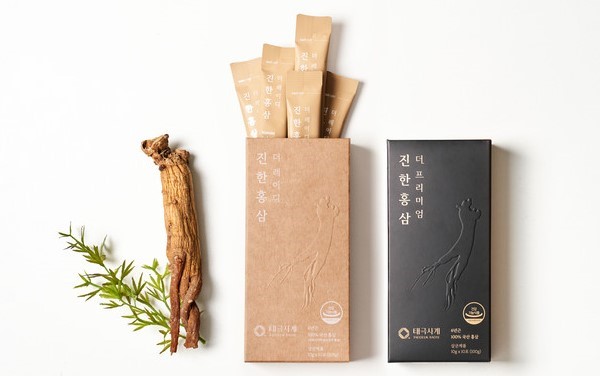Korean ginseng, known scientifically as Panax ginseng, has long been celebrated for its medicinal properties and significant role in traditional Asian medicine. Renowned for its health benefits, such as improving immunity, reducing fatigue, and enhancing cognitive functions, Korean ginseng is one of the most sought-after herbal remedies worldwide. But where exactly is this prized plant primarily grown in Korea? Understanding its cultivation regions provides insight into the factors that make Korean ginseng so unique and valuable.
The Geography of Korean Ginseng Cultivation
Korean ginseng thrives in specific environmental conditions, requiring fertile soil, balanced rainfall, and a temperate climate with distinct seasons. These requirements limit its cultivation to select areas within South Korea. While it is technically possible to grow ginseng in other parts of the country, a few regions have become the heart of ginseng production due to their ideal growing conditions, long history of cultivation, and advanced farming techniques.
1. Geumsan County: The Ginseng Capital
When discussing Korean ginseng, Geumsan County is often the first name to come to mind. Located in the South Chungcheong Province, Geumsan has earned its reputation as the “Ginseng Capital of Korea.”
- History: Ginseng cultivation in Geumsan dates back over 1,500 years, making it one of the oldest ginseng-producing regions in Korea. The area’s farmers have passed down traditional cultivation techniques through generations, ensuring the preservation of quality and authenticity.
- Environment: Geumsan’s soil is rich in minerals, and its temperate climate is perfect for growing high-quality ginseng. The area also experiences well-distributed rainfall, which helps maintain soil moisture without waterlogging.
- Industry Hub: Today, Geumsan is not only a leading producer of ginseng but also a hub for the ginseng industry. The region hosts the annual Geumsan Ginseng Festival, attracting visitors and buyers from around the globe. Ginseng-related products, including teas, extracts, and cosmetics, are widely produced and sold here.
2. Punggi Region: The Home of Traditional Cultivation
Punggi, in Yeongju City of North Gyeongsang Province, is another iconic region for ginseng cultivation. Often referred to as “Punggi ginseng,” the roots grown here are highly regarded for their quality and potency.
- Historical Significance: Punggi has been cultivating ginseng for over 500 years, and the region is known for its adherence to traditional farming methods.
- Unique Qualities: Ginseng from Punggi is often praised for its dense texture and high ginsenoside content, the compounds responsible for many of ginseng’s health benefits.
- Cultural Recognition: Punggi is also home to the Ginseng Museum, which showcases the history, science, and cultural importance of ginseng in Korea.
3. Kanghwa Island: A Coastal Gem for Ginseng
Kanghwa Island, located near Incheon, is another prominent ginseng-growing region. Though it may be less famous than Geumsan or Punggi, Kanghwa Island has carved out its own reputation in the ginseng market.
- Soil and Climate: The island’s soil is rich in organic matter, and its proximity to the sea creates a unique microclimate that benefits ginseng cultivation.
- Distinct Characteristics: Ginseng grown on Kanghwa Island is known for its slender, elongated roots and slightly different flavor profile. It is often preferred for specific medicinal and culinary applications.
4. Other Notable Regions
While Geumsan, Punggi, and Kanghwa Island are the primary ginseng-growing regions, other areas in Korea also contribute to its cultivation:
- Jinbu, Gangwon Province: Known for its clean air and fertile soil, Jinbu produces high-quality ginseng often used in premium products.
- Chuncheon, Gangwon Province: With its cool climate and hilly terrain, Chuncheon is another region where ginseng thrives, albeit on a smaller scale compared to Geumsan and Punggi.
What Makes These Regions Ideal for Ginseng?
Several factors contribute to the success of these regions in producing world-class ginseng:
- Soil Composition: The mineral-rich, well-draining soils in these areas provide the nutrients necessary for ginseng to grow and develop its characteristic flavor and potency.
- Climate: Korean ginseng requires a temperate climate with warm summers and cold winters. The distinct seasons in these regions stimulate the plant’s growth cycle and contribute to the concentration of beneficial compounds.
- Traditional Expertise: Generations of farmers in these regions have mastered the art of cultivating ginseng, ensuring that the roots are grown, harvested, and processed to the highest standards.
- Long Growing Period: Korean ginseng typically takes six years to mature, and these regions are well-suited to support such long cultivation periods without significant environmental stress.
Challenges in Ginseng Cultivation
Despite the ideal conditions in these regions, growing ginseng is not without its challenges. The plant is highly sensitive to pests, diseases, and environmental changes. Farmers must invest significant time and resources into maintaining the health of their crops. Additionally, the six-year cultivation period makes ginseng farming a long-term commitment with delayed financial returns.
Conclusion
Korean ginseng is primarily grown in Geumsan, Punggi, Kanghwa Island, and a few other select regions, each offering unique qualities that contribute to the herb’s global reputation. These areas are celebrated for their ideal environmental conditions, rich history of cultivation, and dedication to quality.





Comments